Mercedes-Benz MBUX Infotainment System Review: A broad offering
For Mercedes-Benz, a new infotainment system is one of the key differentiators when compared to its competitors. Does information technology really stand out enough for millennials to take discover?
That demographic is one of the automaker's principal targets, which is why the A-Class line has been the starting time to get the MBUX system. It's a departure from much of what Mercedes-Benz did before, and is, at the very least, a serious attempt to try and offer something wide.
While I got a head commencement on it when I did hands-on last year, I tested it in a 2019 A 250 4MATIC Hatch.
The basic
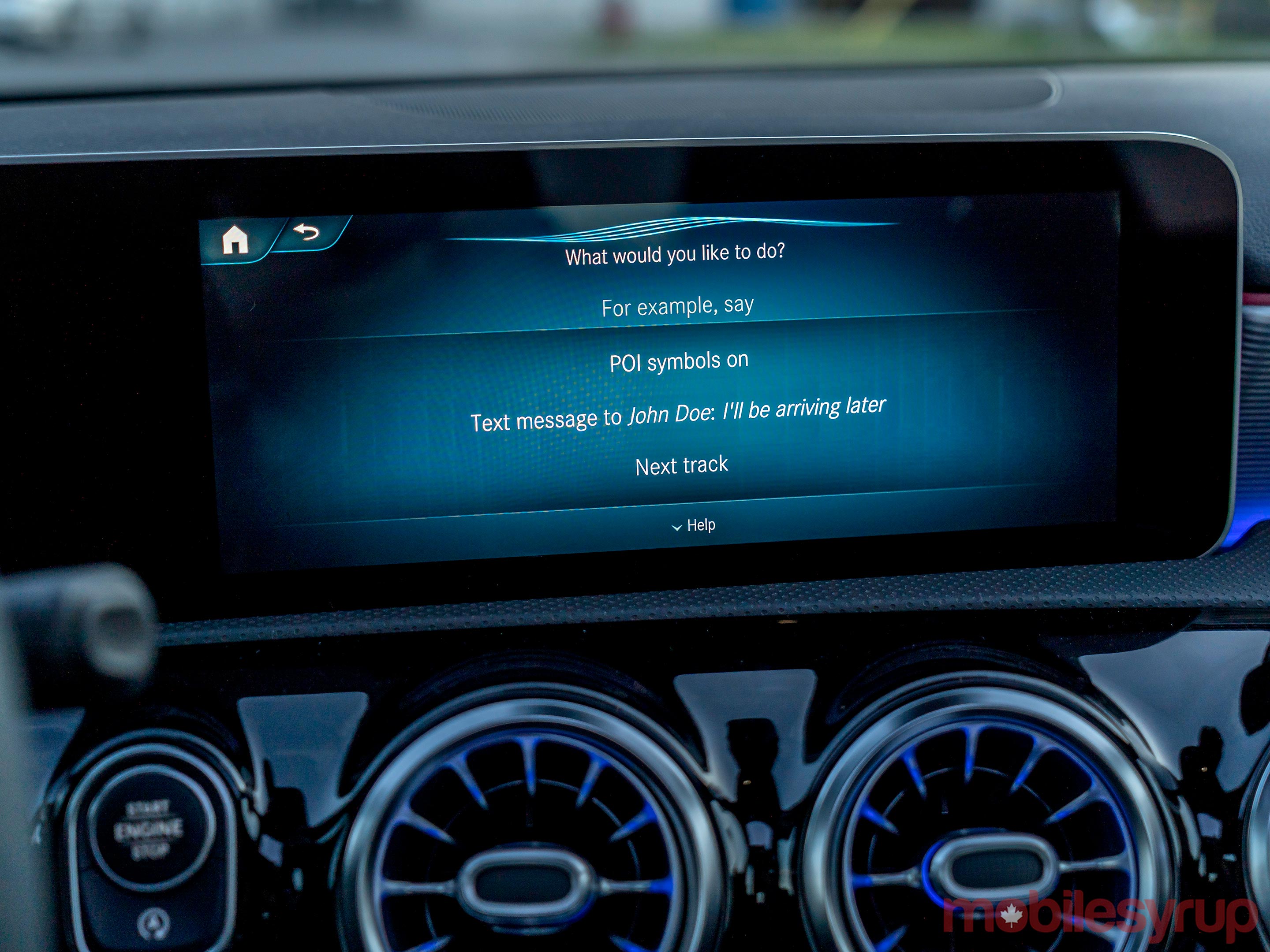
I'm going to try and avert rehashing what I previously covered, but there will exist some overlap. From the outset, MBUX has been designed to be deep, however also interactive. The twin 10.25-inch displays — one as the digital cluster in front of the steering wheel, the other the master infotainment screen — are vibrant and modern.
Comport in mind, even so, that a seven-inch brandish is the standard. To go bigger, yous demand the Premium Parcel that costs an actress $2,950 at the dealership. That package brings in the dual screens, Linguatronic voice control, CarPlay, Android Car, wireless charging, NFC and LED ambient lighting.
That's not to be confused with the $ane,600 Technology Package, which gives you multibeam LED headlamps, adaptive highbeam assist and active altitude assist. In other words, those are extras that aren't actually part of the infotainment array.
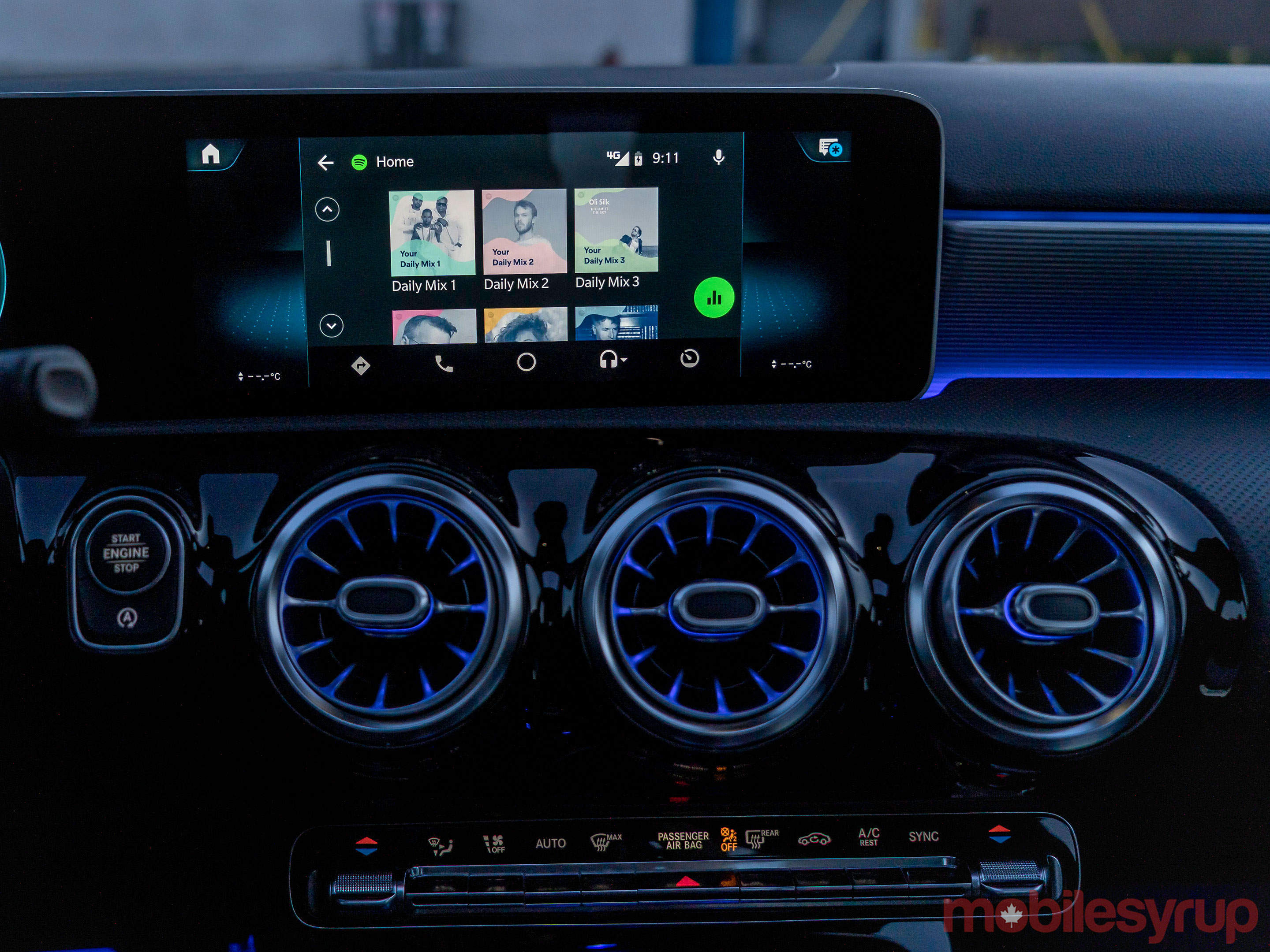
MBUX relies heavily on the cloud, particularly with the Linguatronic voice platform. This isn't a typical in-auto voice stored in the motorcar, but rather one that pulls downward information through the in-car SIM. Engineers designed it to be 'natural' in that it understands language the way people actually talk.
Equally I noted when I first saw information technology, Mercedes felt it was to exist along the aforementioned lines as Alexa, Google Assistant and Siri. I'll impact that later.
The Navigation Package not only gives y'all satellite-based maps, simply likewise augmented reality (AR) and live traffic assistance. Having that package extends the functionality via the Mercedes me app on iOS and Android too. The showtime three years of all those app-based connected services come free, with a subscription to follow later on that.
Working the arrangement

The steering wheel offers some limited controls, merely the real inputs are on the touchscreen itself, and the touchpad in the middle console. The latter is a hybrid of a trackpad with haptic feedback and mouse with multiple buttons.
It's fairly smoothen, except it carries a learning a curve in knowing how touch and press actually work. For example, scrolling across the menu is like swiping side to side, albeit with haptic feedback with each move onscreen. Pressing makes the selection, though there are defended buttons at the peak for navigating tracks, going back or returning to the domicile screen.
Unfortunately, the trackpad'southward integration with CarPlay and Android Motorcar isn't what you might wait. Other infotainment systems integrate the physical input method into both platforms, although to be fair, some of those don't have touchscreens.
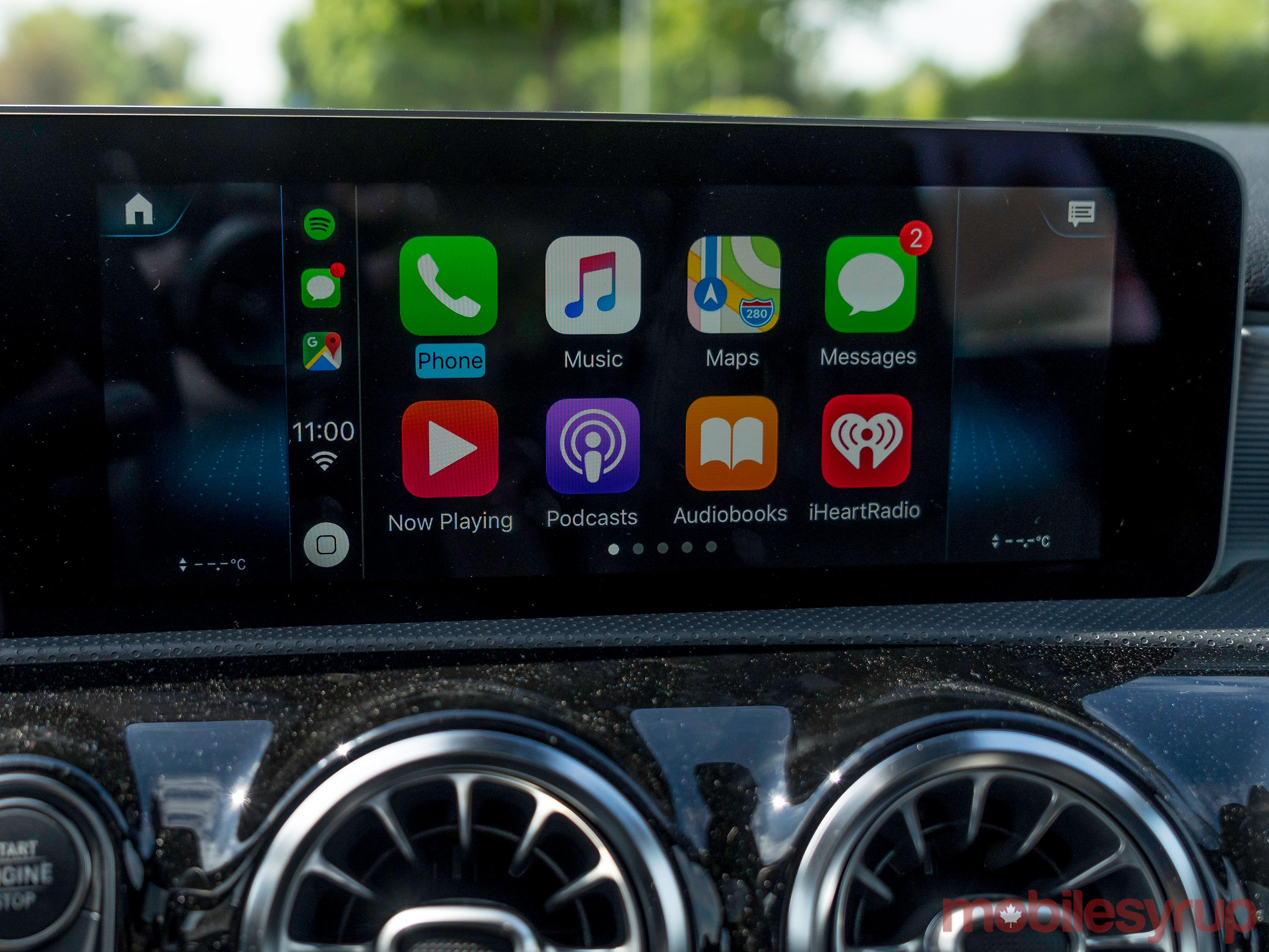
Yet, forcing drivers to use the touchscreen at all times, particularly for Android Auto, which has most no integration with the trackpad, is odd for a vehicle from a German language automaker. I asked whether it was incumbent on Mercedes or Google to figure that out, but never got confirmation one way or another.
Not simply that, but CarPlay and Android Auto also don't have up the screen's full aspect ratio. I asked Mercedes why, and a spokesperson told me that it was to nowadays more than of a 'symbiosis' between MBUX and either platform. This way, the MBUX home push button is e'er visible, and the notification shade tin drop down from the top of the screen.
One skilful thing that I found useful was in how the organisation handles calls and text messages. Calls are easy, including both making and receiving. You can respond to texts using canned responses from the screen or verbally recite what you lot want to say.
Connections whatever layout
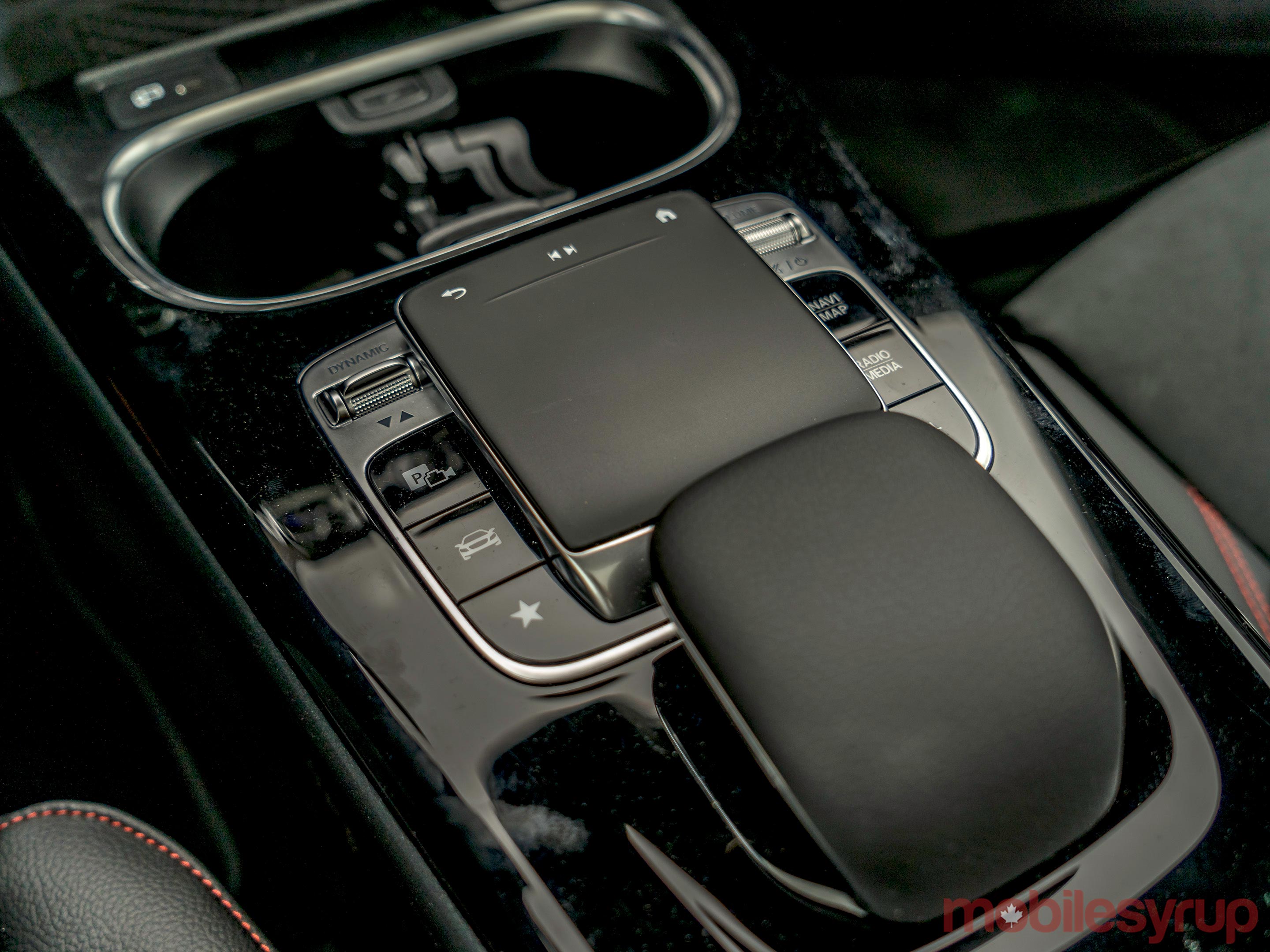
As MBUX rolls out to other lines, like the Eastward and D-Grade, for case, at that place may some variances on connectivity, simply the foundation will be pretty standard throughout from the looks of it.
My A-Class Hatch tester had three USB-C ports, forcing me to use USB-A adapters to bridge the gap. Some might find that kind of exclusivity off-putting, but USB-C is fast becoming ubiquitous for devices. As long every bit y'all have the proper cable, you should exist proficient. For me, I had to make sure to go on a couple of adapters inside just in case a rider needed to charge as well.
Mercedes also abased the Aux-In port going back to 2015 model twelvemonth vehicles, then that'due south been long gone. You do still go a 12-volt socket as an additional charging option though. For audio playback, notwithstanding, information technology's either USB-C or Bluetooth.
The in-car Wi-Fi hotspot comes with only 1GB for a trial run, and so costs an extra $15GB after that. From there, it'southward $35 for 4GB per month, $seventy/10GB and $200/20GB for the year. None of these require whatever kind of contract, but as with any other vehicle, you lot can't add it to an existing data plan because AT&T is the provider in this example. If there is an advantage in that, it's the lack of roaming fees or programs. Cross the edge into the United States and use the data as normal.
In turn, the motorcar itself can connect to Wi-Fi hotspots where available, though I don't know how useful that would exist in virtually cases. System updates are gratis via the deject and in-motorcar SIM. But if yous're close enough and wanted to supplement your phone'southward data, that's i way you could do it.
'Hey Mercedes' voice platform
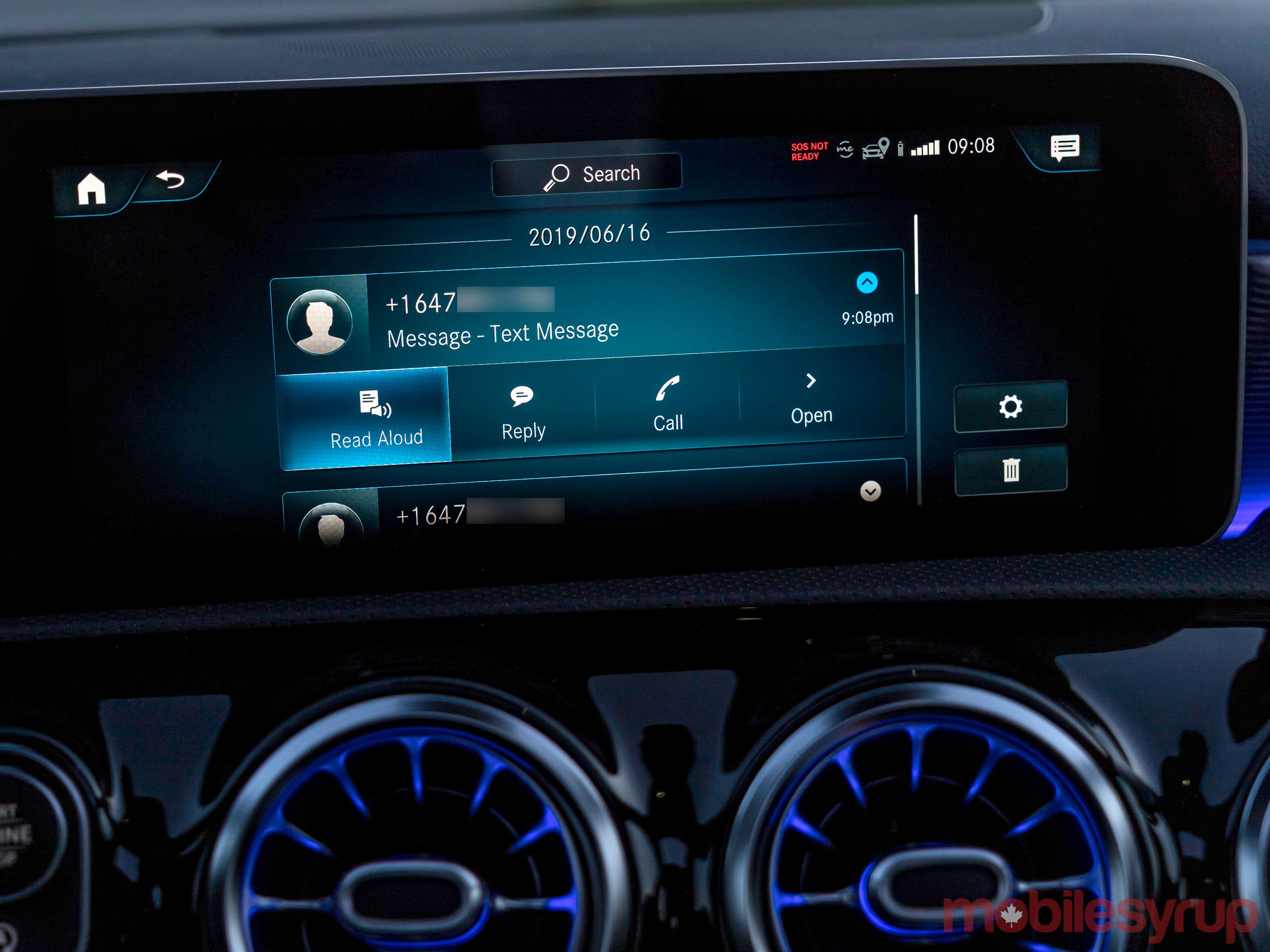
The biggest recipient of all things deject in MBUX is the voice platform. It'due south tied to Mercedes me services equally part of the free three-year window and is designed to get better over time.
There is an onboard portion stored in the vehicle, merely it's really basic. The real meat to these bones is in the cloud-based portion. With "Hi Mercedes" or "Hey Mercedes" salutations, the platform is supposed to be able to engage and answer a lot of different questions. Add in-vehicle controls and commands, and you should accept something pretty dynamic in the cockpit.
Results were mixed during my testing. For example, it was quite good at controlling certain vehicle functions, like changing ambient lighting, turning on air-conditioning and telling information technology which radio station to play. It was also fairly practiced at finding points of interest, talking about the weather and fifty-fifty answering general questions. I tried questions that I would typically ask Alexa or Google Banana, and information technology did okay.
Except information technology'due south more sensitive to how yous ask. Context sometimes also removes admission to content. When I asked almost scores and upcoming games for the FIFA Women's Globe Loving cup, it seemingly had no idea what I was talking nearly. Every asking came dorsum with, "How can I assistance yous?"
Another small gripe is, for something so conversational, some natural language is missing. When I asked well-nigh the last Toronto Raptors game, it nicely noted that the 114-110 win over the Warriors also won them the NBA Championship. Only in reciting the score, it literally said, "One hundred and xiv to one hundred and ten." No one talks like that, nor should a machine waste time with unnecessary filler. It should have been "Ane-fourteen to one-10."
Google, Amazon and Apple tree accept all worked on making their respective voice assistants sound a picayune more human, and that's sorely needed hither too, in my stance. It's as well monotone, and the focus on phonetic pronunciation really adds up to wasted time at a macro level.
The backend for all this voice stuff comes from SoundHound, specifically its Houndify AI platform. Being deject-based means it'due south supposed to be ameliorate over time. It certainly is better than when I kickoff saw it in pre-product concluding year, but with automakers already smashing on bringing in Alexa into their vehicles, I practice wonder how long Mercedes volition want to keep this going.
Mercedes me
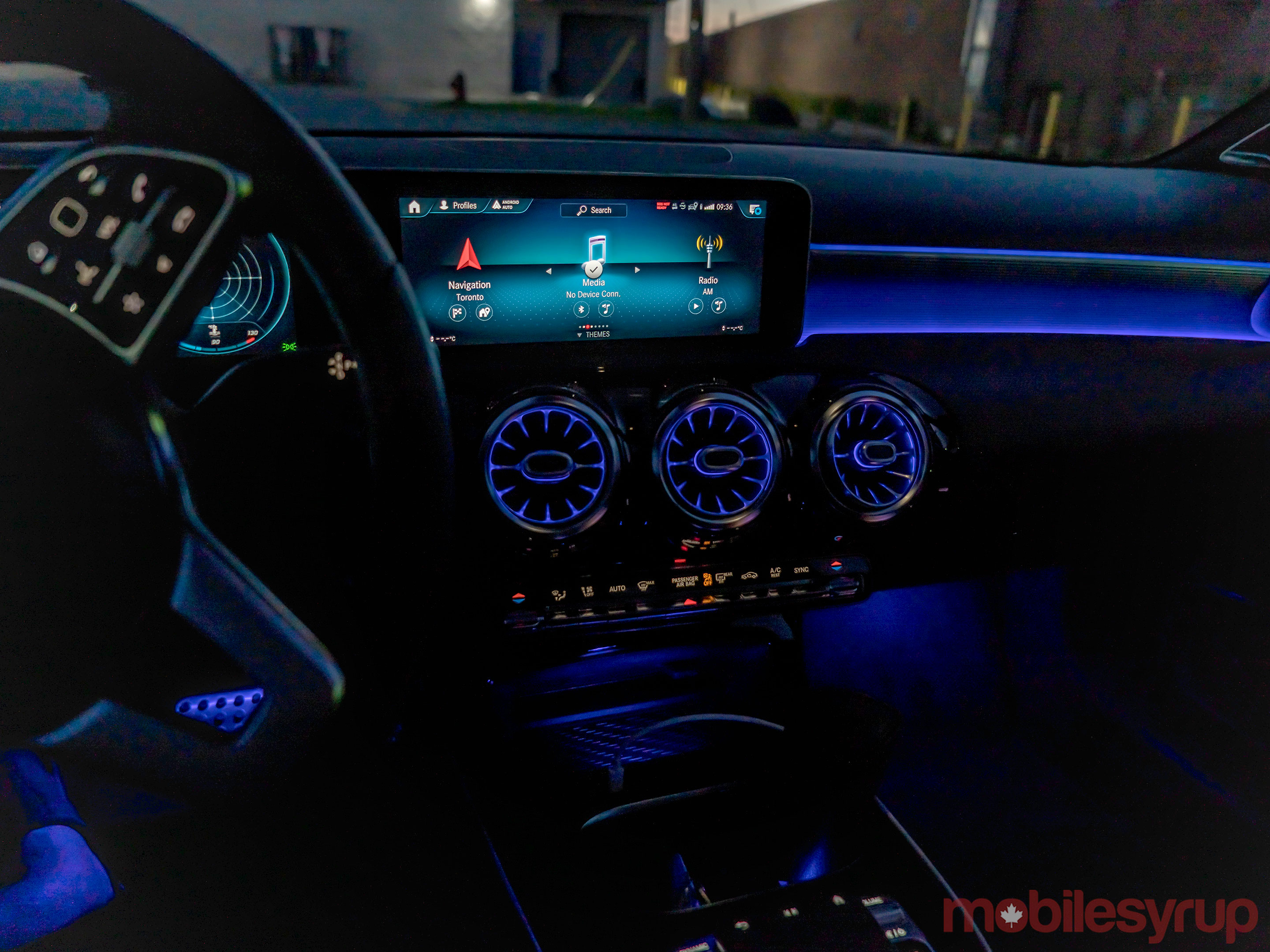
Technical problems negated me from testing out the Mercedes me app, which offers remote starting time, lock/unlock, vehicle diagnostics, tracking and 24/7 concierge, amongst other things. There's also directly integration both in the vehicle and remotely, making for an interesting suite of services.
I'll exist testing these in a time to come test drive, so await for an update to this review sometime soon.
Source: https://mobilesyrup.com/2019/07/01/mercedes-benz-mbux-infotainment-system-review/
Posted by: connollyliffold.blogspot.com


0 Response to "Mercedes-Benz MBUX Infotainment System Review: A broad offering"
Post a Comment